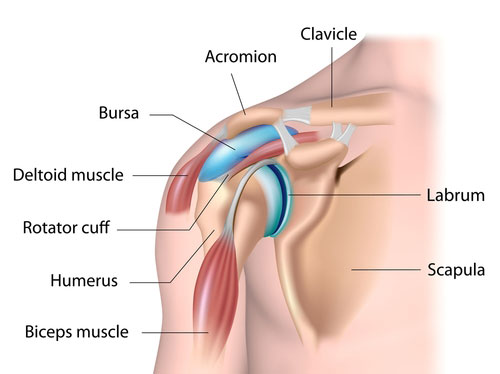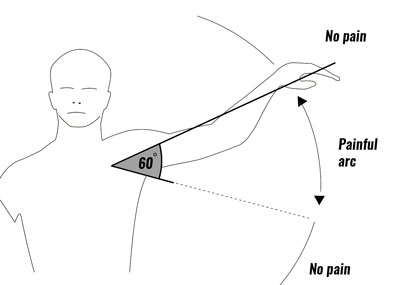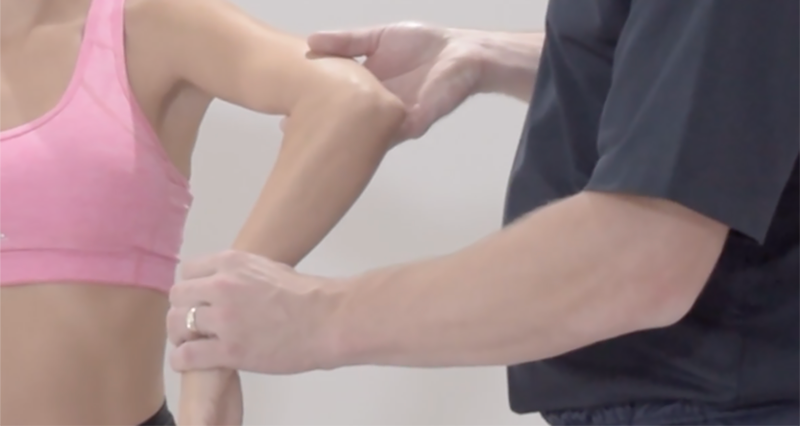The 60-Degree Arc Test, also known as the Painful Arc Test helps identify impingement syndrome in the shoulder. Shoulder impingement syndrome occurs when the tendons of the rotator cuff muscles become irritated and inflamed as they pass through the subacromial space, the passage beneath the acromion. This can lead to pain, weakness, and reduced range of motion in the shoulder.
What is shoulder impingement?

Shoulder impingement, also known as swimmer’s shoulder or thrower’s shoulder, occurs when the tendons of the rotator cuff muscles get trapped or pinched as they move through a narrow bony channel. This channel called the subacromial space, is named because it’s located beneath the arch of the acromion.

Shoulder impingement commonly causes pain in a 60-degree arc when you lift your arm out sideways and up above the shoulder. Initially, you may feel little or no pain, but then it worsens from about 70 degrees to 130 degrees. If this is the case then the test is positive and shoulder impingement is indicated.
How to perform the shoulder impingement 60-degree arc test
The arm is positioned at the side with the elbow extended. Then, the individual slowly abducts their arm (moves it away from the side of the body) in the plane of the scapula (about 30 degrees forward from the frontal plane of the body). Focus is placed on observing or palpating the shoulder area, particularly the motion between 60 degrees and 120 degrees of abduction.

How do I know if the test is positive?
The test is considered positive if the patient experiences pain specifically between 60 degrees and 120 degrees of abduction. This range is significant because it’s where the subacromial space is narrowed, causing potential impingement of the rotator cuff tendons or the subacromial bursa.
A positive 60-Degree Arc Test suggests the presence of shoulder impingement syndrome. Pain in this specific arc of motion indicates that the structures within the subacromial space are being compressed or irritated. However, pain outside this range may suggest other shoulder pathologies.
The 60-Degree Arc Test alone isn’t enough for diagnosis. Diagnosing shoulder pain accurately requires a thorough shoulder examination, which includes other physical tests, patient history, and possibly imaging like MRI or ultrasound. Shoulder impingement can occur alongside other shoulder issues like rotator cuff tears or bursitis, making the clinical picture more complex.
This test is just one part of a broader assessment for shoulder impingement. It helps guide further diagnostic testing and treatment strategies. Treatment may include physical therapy, anti-inflammatory medications, or, in some cases, surgery to relieve the impingement.




